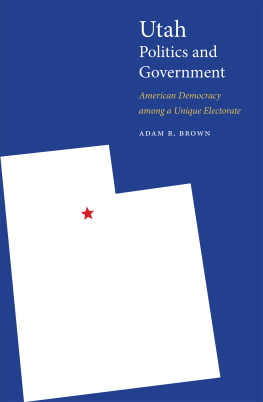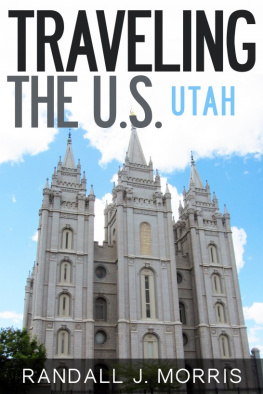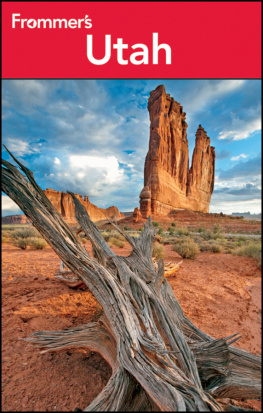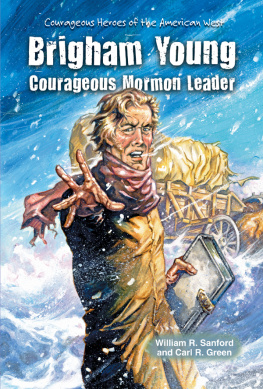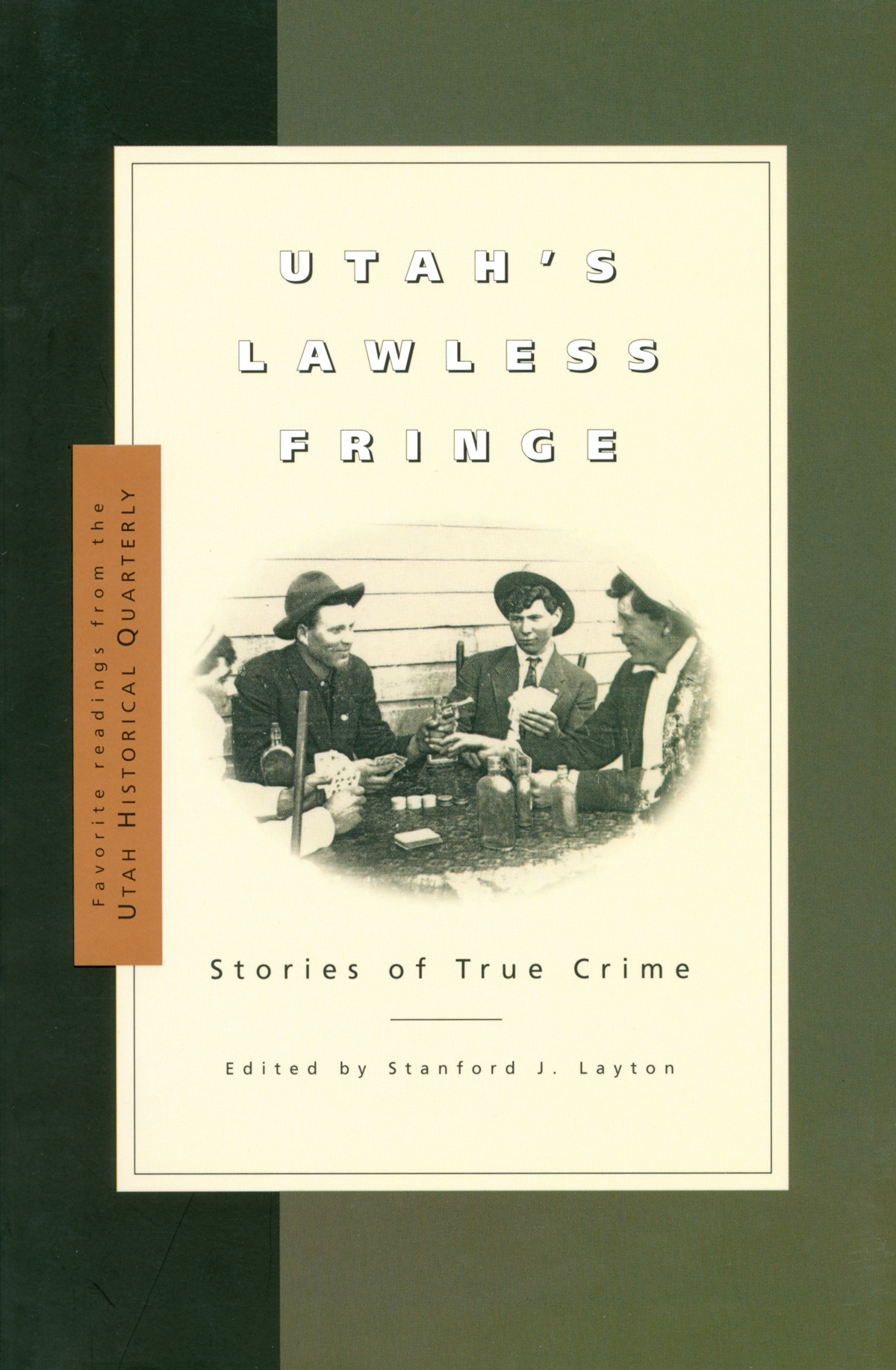UTAHS LAWLESS FRINGE
Stories of True Crime
Favorite Readings from the
Utah Historical Quarterly
Edited by
Stanford J. Layton
Signature Books
Salt Lake City
Cover design by Ron Stucki
2001; Signature Books. All rights reserved. Signature Books is a registered trademark of Signature Books, LLC.
www.signaturebooks.com
Library of Congress Cataloging-in-Publication Data
Utahs lawless fringe : stories of true crimefavorite readings from the Utah historical quarterly / edited by Stanford J. Layton.
p. cm
Includes bibliographical references.
Paper bound ISBN: 1-56085-148-1
1. CrimeUtahHistory. 2. CriminalsUtahHistory. 3. Criminal justice, Administration ofUtahHistory. I. Layton, Stanford J. II. Utah historical quarterly.
HV6793.U8 U73 2000
364.9792dc21
00-055616
Contents
5. The Peculiar Case of James Lynch
and Robert King
6. The Sensational Murder of James R. Hay
and Trial of Peter Mortensen
Editors Introduction
It was at least twenty years ago that the idea of a favorite essays book first popped up within the editorial offices of Utah Historical Quarterly. The thought emerged from the always fertile imagination of Miriam Murphy, associate editor. At the time our venerable journal was nearing its 50th volume year. We lamented the fact that most of the back issues were out of print and that their trove of articles was inaccessible to and largely forgotten by many contemporary readers.
Unfortunately the Bicentennial era was just ending and so were the flush times for our publications program. True, we would always have sufficient funds to produce the Quarterly and other membership publications, but the days were past when we could plan on producing a book or two a year. In fact, by the early 1980s we had suspended book publication for the indefinite future. A favorite articles anthology came to be thought of less and less frequently and then only as an angel dead in heaven.
Imagine the elation in the office upon receiving an invitation from Signature Books in the summer of 1999 for just such an anthology! Miriam had recently retired, but her idea still inspired the staff. We responded with alacrity and went to work. It was a special thrill to me to be named series editor. Yes, series. Signature had outlined the prospect of more than one volumeperhaps as many as five or more over the coming years.
It did not take long to frame the first five general themes. Selecting a dozen or more articles for each took a little longer, but not much. I knew the field of candidates pretty well. Those articles published in the Utah Historical Quarterly during my twenty-seven years as managing editor were as familiar to me as individual students to an elementary school teacher by years end. I had been the first to read them as submissions, had managed the evaluation process, had guided the authors through revisions, had copy-edited many of the articles, and proofread them all at least three times. But I was tolerably well acquainted with the articles published even before 1973 when I took on my editorial duties, having been a subscriber and reader of UHQ since early graduate school days in 1967 and having read earlier volumes that go back to 1928.
Understandably my favorite articles come from the last twenty-seven years. Had I not liked them in the first place, they would not have made the printed page in my journal. (I have often said that editors generally thrive on anonymity but that this does not prevent us from having a tyrannical streak!) I also think that historical research and writing need to be up to date.
Good scholarship, polished writingtwo clearly defined criteria for an anthology. Beyond that, my decisions were strictly personal. These were articles that I especially enjoyedthose I never tired of proofreading and to which I have returned again and again for one reason or another since their initial publication.
Here, then, are fourteen considerations of some aspect of lawlessness in Utah history. They come from fifteen authors who together represent the amazing array of professions, interests, ages, and backgrounds that has characterized our contributors generally. Graduate students, high school teachers, professors, archivists, attorneys, retired businessmen, elected officials, and othersboth professional and layare here. At least one is now deceased and another is lost to us, but all have helped to make my job one of the most enjoyable that a person could ever hope for.
The first essay begins with two high-profile murders in 1851 just after territorial status had come to Utah. The cases were similar in that each suspect was a respected member of his community and each acted from the same motive, avenging his honor by killing the man who had seduced his wife. The counsel for the defense argued a very simple proposition: The principle, the only one, that beats and throbs through the heart of the entire inhabitants of this territory, is simply this: The man who seduces his neighbors wife must die, and her nearest relative must kill him! Both defendants were acquitted under the tenets of this mountain common law. They would not be the only ones. Other trials of avenging husbands and fathers were to follow, with the precedent of justifiable homicide holding sway. Although these types of trials were not unique to Utah, extraordinary factors were at play here as values and procedures were impacted by that most ubiquitous Utah peculiarity, polygamy.
Arthur Pratt, lawman and son of one of Utahs most respected couples, is the subject of the second selection. Showing little deference to Brigham Young, the territorys most revered citizen and highest ecclesiastical leader, Pratt served him with a subpoena and roughed up his gatekeeper for good measure. Though a Mormon himself, Pratt wore his religion uneasily and at first glance seemed the type who could easily abuse his law enforcement auspices. The biographical analysis that unfolds, however, portrays a complex man with a personality actually well suited to his time, place, and circumstances, holding ideas that proved worthy and progressive.
Southeastern Utah is the setting for the next essay as murder and mayhem loomed large in that rugged, sparsely populated region for twenty years. Unlike every other corner of the territory of that time, this one was already occupied by white settlers, cattlemen from Colorado, when Mormons first sent their colonizers. The two groups did not mesh well; additionally, neither cared much for the Native Americans of the area (and vice versa). Effective law enforcement replaced vigilantism and chaos only slowly and not before a raucous chapter in Western history had been stamped indelibly into the record.
Utah Historical Quarterly has never specialized in blood-and- guts stories, but it could not purport to be a credible source for Utah history without an occasional article of that genre. Here come five in a row. The first zeroes in on the murder of a man who was already at some risk just for being black in a predominately white society during the racist years of the Gilded Age. But as a sheepman in cattlemens country, he seemed almost doomed. Gobo Fangos death is better understood now, upon being subjected to this historianturned-detective analysis. The next two articles deal with sensational robberies and murders in Salt Lake City at the turn of the twentieth century. In both instances the writers found something more than a blood-spattered crime scene and a dramatic trial. Both cases provided spectacular histrionics. Onethe Lynch and King caseseems right out of Hollywood as the climax followed quickly upon the heels of an action-packed, bullet-whizzing breakout at the state penitentiary. In contrast, the high drama of the Peter Mortensen case came during the trial when issues regarding the admissibility of evidence turned on the question of divine revelation.



